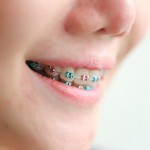
White spot lesions or enamel demineralisation is an early but reversible stage in the development of dental caries. White spot lesions (WSLs) are an adverse effect of fixed appliance orthodontic treatment as build up of dental plaque around orthodontic brackets increases the risk of demineralisation. Topical fluorides have been shown to reduce the prevalence and incidence of caries and studies have also demonstrated that topical fluorides reduce the number of WSLs or demineralised lesions.
The main objective of this Cochrane review update was to evaluate whether topical fluoride reduces the proportion of orthodontic patients with new demineralised lesions (DLs) after fixed appliance treatment.
Methods
Searches were conducted in the Cochrane Oral Health’s Trials Register, Cochrane Central Register of Controlled Trials (CENTRAL), Medline, Embase CINAHL, the US National Institutes of Health Trials Registry (ClinicalTrials.gov) and World Health Organization International Clinical Trials Registry Platform databases with no restrictions on language or publication status. Parallel-group randomised controlled trials (RCTs) comparing a fluoride-containing product versus a placebo, no treatment or a different type of fluoride treatment where enamel demineralisation was assessed at the beginning and at the end of orthodontic treatment were considered.
At least 2 reviewers independently selected studies, extracted data and assessed risk of bias using the Cochrane domain bases tool. Dichotomous outcomes were expressed as risk ratios (RRs) with 95% confidence intervals (CIs) and continuous outcomes as mean differences (MDs) and 95% CIs. Standard Cochrane statistical approaches were used.
Results
- 10 studies with data from 9 studies, comparing 8 interventions, involving 1798 randomised patients (1580 analysed) were included.
- 2 studies were at low risk of bias, 6 at unclear risk and 2 at high risk
- 2 RCTs (405 patients) at low risk of bias, investigated the professional application of varnish (7700 or 10,000 parts per million (ppm) fluoride (F)), every 6 weeks finding insufficient evidence of effectiveness in preventing new DLs, RR = 0.52 (95%CI; 0.14 to 1.93), [low-certainty evidence].
- 1 RCT (95 patients) at unclear risk of bias provides low-certainty evidence certainty that fluoride foam (12,300 ppm F), professionally applied every 2 months, may reduce the incidence of new DLs (12% v 49%) after fixed orthodontic treatment, RR = 0.26 (95%CI; 0.11 to 0.57).
- One study (380 patients), at unclear risk of bias, also provides a low level of certainty that use of a high-concentration fluoride toothpaste (5000 ppm F) by patients may reduce the incidence of new DLs (18% v 27%) compared with a conventional fluoride toothpaste (1450 ppm F), RR = 0.68 (95%CI; 0.46 to 1.00) 380 participants).
- There was no evidence for a difference in the proportions of orthodontic patients with new DLs after treatment with fixed orthodontic appliances for the following comparisons:
- an amine fluoride and stannous fluoride toothpaste/mouthrinse combination versus a sodium fluoride toothpaste/mouthrinse,
- an amine fluoride gel versus a non-fluoride placebo applied by participants at home once a week and by professional application every three months,
- resin-modified glass ionomer cement versus light-cured composite resin for bonding orthodontic brackets,
- a 250 ppm F mouthrinse versus 0 ppm F placebo mouthrinse, (study at high risk of bias),
- the use of an intraoral fluoride-releasing glass bead device attached to the brace versus a daily fluoride mouthrinse (study at high risk of bias).
Conclusions
The authors concluded: –
This review found a low level of certainty that 12,300 ppm F foam applied by a professional every 6 to 8 weeks throughout fixed orthodontic treatment, might be effective in reducing the proportion of orthodontic patients with new DLs. In addition, there is a low level of certainty that the patient use of a high fluoride toothpaste (5000 ppm F) throughout orthodontic treatment, might be more effective than a conventional fluoride toothpaste. These two comparisons were based on single studies. There was insufficient evidence of a difference regarding the professional application of fluoride varnish (7700 or 10,000 ppm F). Further adequately powered, randomised controlled trials are required to increase the certainty of these findings and to determine the best means of preventing DLs in patients undergoing fixed orthodontic treatment. The most accurate means of assessing adherence with the use of fluoride products by patients and any possible adverse effects also need to be considered. Future studies should follow up participants beyond the end of orthodontic treatment to determine the effect of DLs on patient satisfaction with treatment.
Comments
We have recently reported on two other reviews (Dental Elf – 25th Feb 2019, Dental Elf – 26th Sep 2019) looking at treatment of WSLs these have included but RCTs and quasi-RCTs. This review updates the early Cochrane review (Dental Elf – 27th Jan 2014) including only parallel group RCTs including 7 more studies then in the previous version of the review. Although the authors note an improvement in the quality of the available studies since the first version of this review the evidence available is only of low certainty. This because of a lack of replication of the findings in other studies or those in different settings to confirm external validity. Given that WSLs (DLs) have an aesthetic impact this patient-reported outcome was surprisingly not included as an outcome in any study. Clearly more evidence is needed in order to determine the most effective way of delivering fluoride to the orthodontic patient to prevent WSLs.
Links
Primary Paper
Benson PE, Parkin N, Dyer F, Millett DT, Germain P. Fluorides for preventing early tooth decay (demineralised lesions) during fixed brace treatment. Cochrane Database Syst Rev. 2019;2019(11):10.1002/14651858.CD003809.pub4. Published 2019 Nov 17. doi:10.1002/14651858.CD003809.pub4
Other references
Dental Elf – 27th Jan 2014
Dental Elf – 25th Feb 2019
Fluoride for white spot lesion prevention during orthodontic treatment
Dental Elf – 26th Sep 2019
Enamel white spot lesions: self-application of topical fluorides for prevention and reversal
Dental Elf Blogs – Enamel white spot lesions
